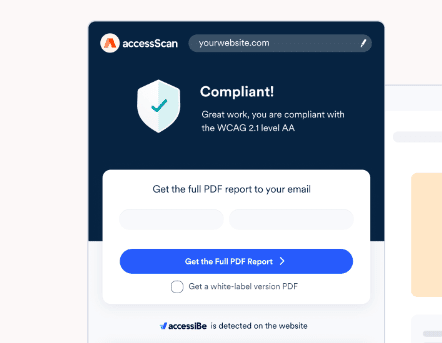Understanding why accessibility should be a top priority for all web designers is crucial. Research indicates that over 57 million Americans, representing a significant portion of the US population, experience some form of disability. This substantial market cannot be disregarded by website designers. Numerous approaches exist to enhance your website’s accessibility, such as incorporating UX research tools. This article aims to deconstruct the fundamental elements of web accessibility and provide compelling reasons why it should be paramount when designing and maintaining your website.
Web Accessibility Explained
Web accessibility encompasses a comprehensive set of practices aimed at making websites usable for individuals with disabilities. This includes people who are blind or visually impaired, deaf or hard of hearing, and those with mobility limitations. Additionally, it extends to individuals with learning disabilities and cognitive impairments. When addressing accessibility, web designers should prioritize the following key areas:
- Content: All content, including text, images, videos, and other media, should be accessible to users with disabilities. This necessitates appropriate tagging, labeling, and providing alternative text for images.
- Navigation: Users should be able to navigate the website effortlessly, even if they rely on assistive technologies like screen readers. A well-structured website with clear and consistent links is essential.
- Functionality: All website functionalities, including forms, search bars, and maps, must be accessible to users with disabilities. Ensuring compatibility with assistive technologies such as screen readers and keyboard-only navigation is vital.
WCAG 2.1: A Benchmark for Accessibility
WCAG 2.1 comprises a set of guidelines designed to aid web designers in creating accessible websites. Developed by the World Wide Web Consortium (W3C), an international organization responsible for web standards, WCAG 2.1 offers specific recommendations to enhance website accessibility for individuals with disabilities. Though not legally mandated, it is widely regarded as the gold standard for web accessibility.
Numerous governments and organizations have embraced WCAG 2.1 as their official accessibility standard. To evaluate your website’s compliance with these standards, you can utilize the reputable accessScan accessibility scanner. This online diagnostic tool conducts a comprehensive audit of your website within minutes.
By simply entering your domain, you will receive a detailed and downloadable audit report, which includes comprehensive explanations and a score for each test conducted.

Let’s delve into the compelling reasons why prioritizing web accessibility should be paramount.
Enhancing the Overall User Experience
Accessibility is not solely about making websites usable for individuals with disabilities; it also significantly improves the user experience for all users. For instance, a more accessible website website benefits individuals using mobile phones or tablets, those using different browsers or operating systems, and those in noisy environments.
Prioritizing Accessibility: Minimizing the Risk of Costly Lawsuits
Failing to make your website accessible to individuals with disabilities can expose you to potential lawsuits. Notably, in the United States, there have been several high-profile lawsuits against companies with inaccessible websites, often resulting in substantial settlements.
A prime example is the 2017 lawsuit against online grocery store Peapod agreed to pay $250,000, which alleged that their website was inaccessible to individuals with visual impairments, ultimately leading to a settlement. In the same year, the online food delivery company Domino’s was sued faced legal action for allegedly violating the Americans with Disabilities Act (ADA) by blocking access to their websites and apps. The lawsuit, initiated by the Paralyzed Veterans of America (PVA), claimed that Domino’s had failed to ensure their website and app were usable by blind and visually impaired customers. Similar lawsuits have emerged in Canada, with some companies being ordered to pay significant damages.
It’s important to note that any company can be sued at any time. However, adhering to accessibility guidelines significantly strengthens your position in defending against such claims.
Expanding Audience Reach
Prioritizing accessibility and making your website usable for individuals with disabilities can significantly expand your audience. With approximately one in five adults in the United States having a disability, millions of potential customers or clients may encounter difficulties interacting with your online brand if accessibility is neglected. This could result in missing out on a substantial portion of your target audience.
Moreover, if you offer products or services through your website, embracing accessibility can unlock revenue-generating opportunities, given that the collective spending power of individuals with disabilities in the US is estimated to be around $490 billion.
Prioritizing Accessibility for Enhanced SEO Performance
An often-overlooked benefit of making your website accessible is its positive impact on SEO performance. Google considers accessibility as a ranking factor. Consequently, websites that adhere to WCAG 2.1 standards are rewarded with higher rankings on search engine results pages (SERPs). This translates to increased get more traffic to your website from users searching for information online. Research by the Boston Consulting Group suggests that an accessible website can lead to a 20% increase in organic traffic.
